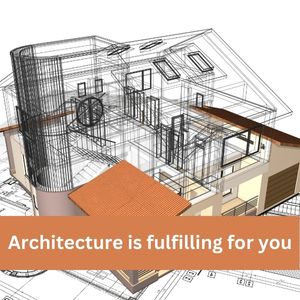Announcement
Get Ready for INDUS CUP 2K26! | Dates: 5–10 January 2026 | Stand a Chance to Win Cash Prizes up to ₹10,00,000!...Read more Get Ready for INDUS CUP 2K26! | Dates: 5–10 January 2026 | Stand a Chance to Win Cash Prizes up to ₹10,00,000!
We are excited to announce the Indus Hackathon 2025, an exhilarating one-day event organized by the CSE Department of Indus University....Read more We are excited to announce the Indus Hackathon 2025, an exhilarating one-day event organized by the CSE Department of Indus University.
26th ISTE Faculty Annual State Convention will be held at Indus University on April 27, 2023....Read more 26th ISTE Faculty Annual State Convention will be held at Indus University on April 27, 2023.
Get Ready for INDUS CUP 2K26! | Dates: 5–10 January 2026 | Stand a Chance to Win Cash Prizes up to ₹10,00,000!...Read more Get Ready for INDUS CUP 2K26! | Dates: 5–10 January 2026 | Stand a Chance to Win Cash Prizes up to ₹10,00,000!
We are excited to announce the Indus Hackathon 2025, an exhilarating one-day event organized by the CSE Department of Indus University....Read more We are excited to announce the Indus Hackathon 2025, an exhilarating one-day event organized by the CSE Department of Indus University.
26th ISTE Faculty Annual State Convention will be held at Indus University on April 27, 2023....Read more 26th ISTE Faculty Annual State Convention will be held at Indus University on April 27, 2023.

You will get the opportunity to meet a lot of new people and travel extensively as an architect. No matter if you are in a consulting or supervising capacity, you will be able to travel the globe to see how your work was first conceived and to see it come to life. You'll always be driven to explore, broaden your horizons, continue to study, and try new things. When you visit another country, you'll take a glance around, get a feel for the local culture, and then, inspiration strikes for how you might help make a particular location appear even more stunning.
Another exciting aspect is that you don't always have to work alone; you can always create things in a group, especially with engineers. It would be wonderful to work with individuals that share your passion for architecture, see familiar faces, and provide support when needed.


Being an architect requires you to put in extra hours, both to fulfil the strict deadlines set by clients and because you will feel compelled to keep working on "your baby" until it becomes unique and fits your personal standards. You'll strive for accuracy and want to steer clear of blunders. But after you're finished, you'll find yourself staring at the actual structure and appreciating the results of your labour. And trust us when we say that when you get to walk inside the building you created — or pass by it — and witness how pleased people are to live or work in a lovely and safe area, you will forget about all the moments of struggle.
In numerous phone calls, online chats, and in-person meetings with clients, architects present ideas and sketches for improvement in order to provide the finest potential outcome. In addition to consulting, architects are skilled at presenting and bargaining.
Architects spend a lot of effort making sure they meet deadlines, come up with novel ideas, and find methods to be creative while staying within the client's budget. The customer can pick from a variety of variations of the designs that they produce.
Architects are frequently given the responsibility of project managers and must demonstrate their ability to handle large-scale projects. Sometimes they are the ones who need to communicate with civil, mechanical, and electrical engineers as well as quantity surveyors since they determine how the overall construction process will proceed.

Architects must be knowledgeable about legal requirements, environmental research, high-quality building materials, suppliers, and customer requests.
Nowadays, clients want to see more than just a basic concept design and desire to see more detailed virtual representations of the idea. After they know what they want to design, the majority of architects begin using a tool that enables them to save time and make their ideas appear more realistic. They can thereby benefit from a more effective process. The main advantage of this kind of software is that architects don't have to figure out complex problems on their own because they can test structural and energy systems beforehand and give their clients a visual representation of a secure and functional building.

The majority of you have undoubtedly heard about the newest sustainability trends and how each industry helps to preserve and protect the environment as a whole. Sustainable (green) architecture is essential since the construction and architecture sectors are responsible for 39% of energy-related CO2 emissions. By thinking more about future generations and environmentally friendly solutions when it comes to the use of building materials, energy generation and consumption, system design, location of buildings, etc., people are attempting to reduce the negative influence on the environment when designing buildings. By using this strategy, the environmental impact of human infrastructure is reduced.
Students at the Indus Architecture School learn about architectural theory, history, and practice. An institution is a setting for knowledge acquisition and self-learning. The course programme of the Indus Architecture School at Indus University ensures a crucial basis for students who develop into future professionals in architecture. To advance research and enhance its educational programmes, the Institute has various Memorandum of Understanding with prestigious national and international institutes and universities. At Indus Architecture School, architectural education is provided in a two-way process by lecturers and students. Instructors work closely with the students to find solutions to complicated and common issues related to human habitation. The educational paradigm that results from this strategy is more participatory and experimental.
